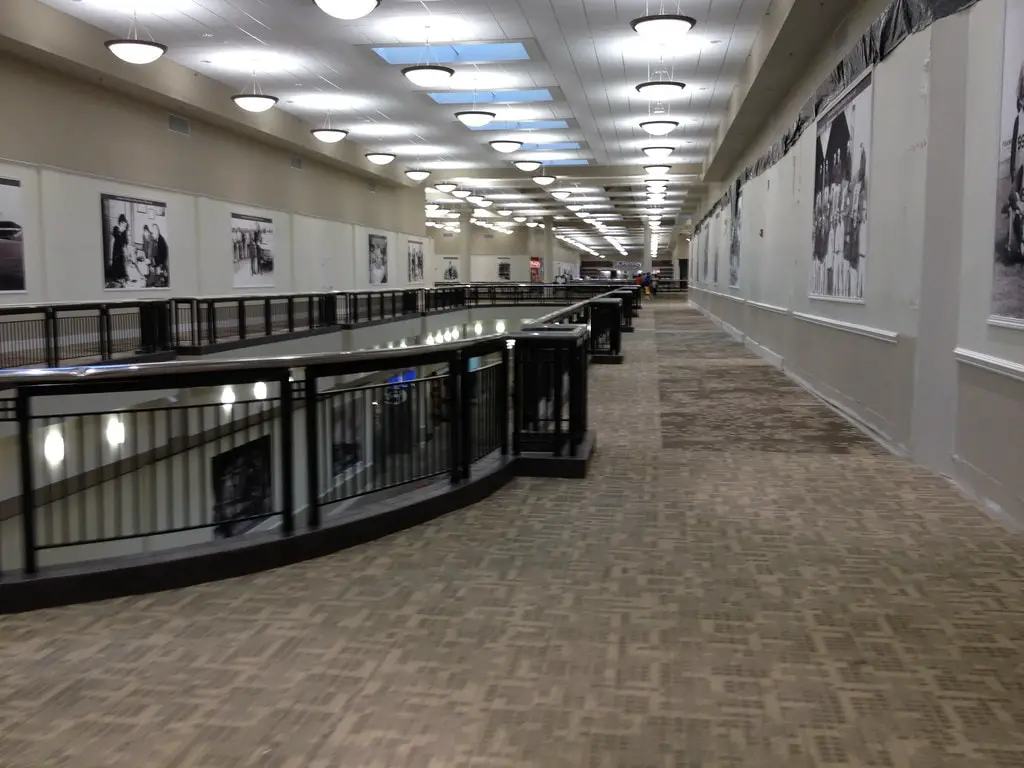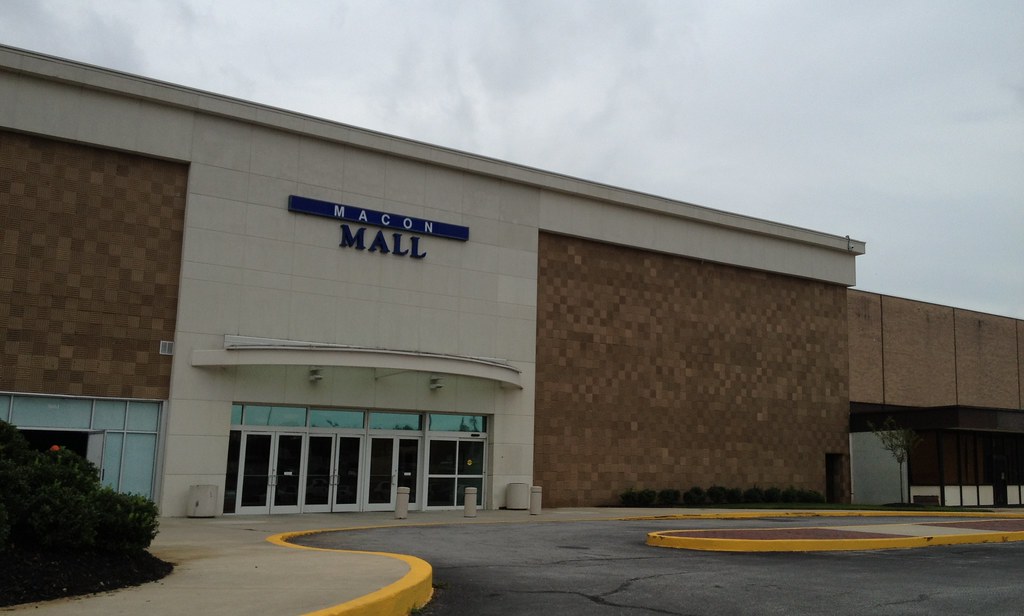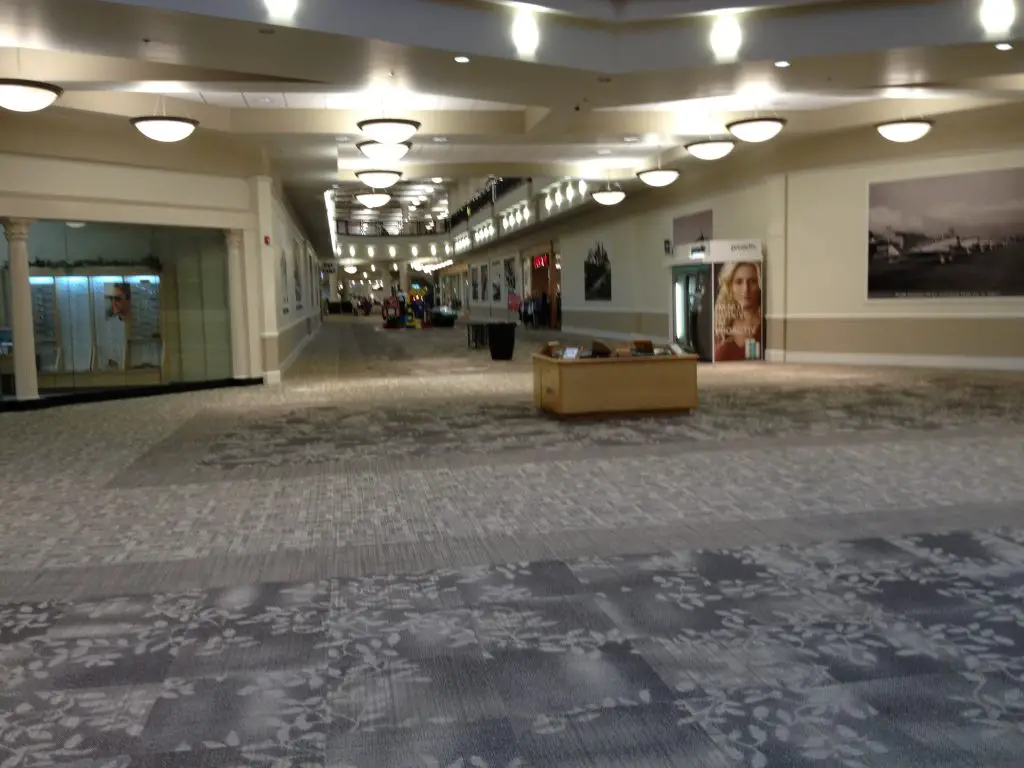The Rise of Macon Mall
In 1975, Macon, Georgia, witnessed the rise of Macon Mall, a sprawling 1.08-million-square-foot retail giant. It was a year marked by excitement in the local community, as the mall promised a new era of shopping experiences with prestigious anchors like Sears, JCPenney, Belk, and Davison’s. These names were symbols of American consumer culture, drawing crowds across the region.
The once-thriving Westgate Mall, Georgia’s first enclosed shopping space, saw its demise directly linked to the rise of Macon Mall. The competition wasn’t simply fierce but transformative, reshaping where and how locals engaged with retail.
The mall’s layout and offerings set a high bar in those early years. Despite its later bankruptcy, additions like Woolworth hinted at the diverse consumer base the mall sought to attract. The disco lights might have faded, and maintenance costs soared, but the mall’s position in Macon’s retail scene seemed unshakeable.
The first significant change came in 1983, with a renovation to update the mall’s appearance and functionality.
Three years later, a food court was added, bringing new life and a modern twist to the mall’s offerings. This wasn’t merely about food; it was a new social space where shopping met dining in a casual, accessible environment.
By 1986, Davison’s transition to Macy’s reflected more than a name change; it symbolized a shift towards a more unified, national retail landscape. The Macon Mall wasn’t just a local hub; it was part of a broader American retail story that intertwined with the fates of major department stores and consumer trends spanning decades.
When we explore things to do in Macon, Georgia, the mall’s story is a testament to the city’s commercial evolution, reflecting broader trends in shopping and social spaces.
Peak Years and Expansion
The late ’90s brought a golden era for Macon Mall, highlighted by an ambitious expansion in 1997.
Suddenly, the mall wasn’t just large; it was the largest in Georgia, boasting 1,448,200 square feet of retail space. This expansion wasn’t merely physical; it redefined the mall’s place in the retail hierarchy.
New anchors, Dillard’s and Parisian, joined the lineup, infusing the mall with an upscale vibe. It felt like Macon Mall was on the brink of something grand, a shopping destination that could compete nationally.
Over 40 new stores opened, transforming the mall into a buzzing hub of activity. Shoppers had more choices, from luxury brands to trendy eateries.
This era also saw the construction of two parking garages, a response to the visitor surge. It was a sign of confidence, a belief in the mall’s continued growth and appeal.
The revamped food court now boasted names like Atlanta Bread Company and Sbarro, alongside a new attraction, Time Out Arcade, offering a blend of dining and entertainment options.
Macon Mall was Georgia’s largest mall until 1999 when the Mall of Georgia opened. But for those two years, Macon Mall was the king. It was a period of prosperity when the mall seemed invincible.
The Onset of Decline
However, fortunes changed, and the shift began subtly around 2006 – 2008 for Macon Mall. Belk acquired Parisian in 2006 and shut it down in 2007.
Next year foreclosure hit, a tangible sign of financial struggles. It felt like a storm had arrived, one that would reshape the mall’s future.

The opening of The Shoppes at River Crossing in 2008 marked a turning point. The new lifestyle center led to closure Dillard’s, a key anchor, leaving a void that seemed to echo through the corridors of Macon Mall. Dillard’s departure wasn’t just a loss of a store but a blow to the mall’s identity and appeal.
Retailers began to exit in waves. Names like Ann Taylor Loft, Abercrombie & Fitch, and Eddie Bauer left, drawn away by newer, shinier options or shuttering due to their own challenges.
The departure wasn’t limited to apparel; even Starbucks and Ruby Tuesday closed their doors. It was a domino effect, each departure eroding the mall’s status and shopper loyalty.
By 2009, the landscape of Macon Mall had altered dramatically. The buzz had dimmed, replaced by a growing silence as more storefronts darkened. Once a bustling retail and social life center, the mall showed undeniable signs of distress.
The reasons were manifold: competition, economic downturns, and perhaps a misalignment with changing consumer expectations.
The decline was in motion, a challenging chapter in the mall’s history that seemed to mark the end of an era.
Attempts at Revival and Demolition
In 2010, a glimmer of hope appeared for Macon Mall with new ownership under Hull Storey Gibson.
The company had big plans, including demolishing the east wing, starting with the vacant Parisian building. This decision, I believe, was both a practical and symbolic gesture, an attempt to shed the old and begin anew.
The strategy was clear: consolidate the vibrancy to one section, the west wing, and perhaps recapture some lost magic. Rue 21, Finish Line, and Spencer’s all moved, signaling a willingness to adapt.
But not every store stayed aboard this shifting ship; American Eagle Outfitters, Victoria’s Secret, and Sunglass Hut departed, perhaps seeing the writing on the wall or finding better prospects elsewhere.

Demolition kicked off on August 15, 2011. It was a physical and symbolic space clearing, making room for new beginnings.
Yet, the anticipated revival seemed to sputter. The loss of Sears in April 2012, followed by Belk’s exit in September, left gaping holes in the mall’s lineup and morale.
The Continued Downward Spiral
Despite Hull Storey Gibson’s efforts, the descent continued. Burlington Coat Factory’s move to the upper level of the former Sears in 2015 was a rare positive note, but it wasn’t enough to stem the tide.
The departure of JCPenney in July 2017, following a nationwide culling of stores, removed another cornerstone of the mall’s retail offerings.
By this point, the narrative had shifted from revival to survival. Macy’s announcement in January 2020 that it would close its Macon Mall location in March was a significant blow.
The departure of this final anchor store symbolized the end of an era and left Burlington as the sole survivor in a sea of vacancies.
The once-thriving mall was now a shell of its former self, a poignant symbol of the challenges facing brick-and-mortar retail in the 21st century.

Macon Mall Today and Future Redevelopment
Today’s Macon Mall is a far cry from its bustling beginnings. The high vacancy rate and quiet corridors tell a story of change, decline, and the challenging retail environment.
Yet, there’s a new chapter on the horizon, marked by Macon-Bibb County’s acquisition and plans for a $100 million investment announced on September 15, 2021.
The vision? To transform the mall into a mixed-use space that breathes new life into the area.
The amphitheater, aiming to seat up to 10,000, and the world’s largest Pickleball facility are bold moves, signaling a shift from traditional retail to entertainment and lifestyle offerings.
This redevelopment is not just about reviving a building; it’s about rejuvenating a community and creating spaces that foster engagement, recreation, and learning.
Central Georgia Technical College and Middle Georgia State University spaces introduce an educational element, promising a blend of commerce, culture, and community.
The plan reflects a broader trend: malls as hubs for more than shopping, encompassing work, play, and learning under one roof.
Revival and Innovation: Macon Mall’s New Chapter
The story of Macon Mall in 2023 and 2024 is one of transformation and hope. Macon-Bibb County has boldly converted this largely defunct commercial center into a new civic complex.
The change is radical. Where shoppers once browsed, the county is now carving out spaces for government offices and recreation facilities.
In a significant move, the Hull Property Group agreed to donate a substantial part of the mall property to the county.
This wasn’t just a generous gesture but a strategic exchange for about $70 million in property tax credits. The donation included the land cleared from previous demolitions and about a third of the mall structure.
By March 2024, Macon Mall began its second life as a civic hub. The highlight is the two-story sports complex, which is home to potentially the world’s largest indoor pickleball facility.
Several local government departments have already relocated to the mall, with plans for more to join by the end of April 2024.
The approach Macon-Bibb County is taking is somewhat unconventional. While private developers often reshape former malls into new commercial spaces, the county’s control allows for broader, community-focused planning.
This includes the outdoor amphitheater and the continued development of the sports complex, signaling a shift from traditional retail to a center of community activity and governance.
